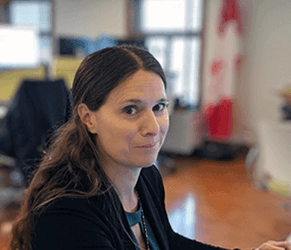Recent Blogs
- Market Outlook Fed Watch Part 2
- Market Outlook Fed Watch
- The Bipartisan Infrastructure Plan and Construction Costs
- Steel Industry Volatility, Risks & Risk Mitigation
- Total Benefit - HVAC
- The Ins and Outs of Insulated Concrete Forms
- Mini Construction Market Update
- Where Did All the Wood Go
- How Do You Price an Elephant
- What if This is the Recession?
- The Pitfalls of Dollar per Square Foot Estimating
Are you in a busy market and maybe concerned that the trades are stretched too thin? Are you concerned this may result in a lack of competition and an undesirable number on bid day?
You might want to consider a strategy that we refer to as “90%-105%”. We recommend this strategy in busy markets where you design the base building to 90% of your target budget then create add alternates that equate to 105% of the target.
The Right Way and The Wrong Way
There are good ways and bad ways to do this.
- Ensure your add alternates are clearly stated and concise so that they are easy for the various trades to price.
- Each alternate should have a large dollar figure associated with it.
- Make sure you don’t have too many add alternates. Having a large number of unclear alternates on the plans requires the subs to put in more effort digesting the information, which can subsequently increase their perceived risk and impact pricing.
An Example
Your project is a lab building located in a busy market. You have a budget of $50,000,000 and a program equal to 110,000 GSF. You want to build out as much of your program as possible now, but also want to make sure that you can finish it up when additional funding becomes available. Due to the current market conditions, the fully fit-out cost of your building is being estimated at around $480/sf. Unfortunately $480/sf x 110,000 equals $52,800,000, which is roughly 5% over your budget. Now, you also know that there are a number of large projects in your area going to bid around the same time and are worried that pricing will be driven up even higher as all the subs get busier.
Since you already have a building that is designed to 105% of your budget, the “90%-105%” strategy can come into play. In this case, you can take a couple of large chunks and make them add alternates. After much discussion, you decide that you want to build as much core-shell as possible. Shelling the wet labs on the 3rd floor and the vivarium in the basement makes sense since they are longer-term requirements. By doing this you get an estimate of $45,000,000, which is 90% of the target budget. Now on bid day everything goes well, the subs cooperate and the base bid comes in at $45,000,000. In the end, you are able to fit-out the 3rd-floor wet labs, getting you to your $50,000,000 budget. Finally, you are left with a shelled vivarium that you can fit-out at a later date.
Why Do Clients Like This Strategy?
It can be stressful going out to bid in a busy market. The 90%-105% strategy creates peace of mind and a definitive backup plan should you end up with a few trades coming in higher than anticipated. On the 105% end of the spectrum, if the market turns you potentially could end up getting your fully designed building within your target budget. In the example above if the market were to shift you would not only be able to fit-out the 3rd-floor wet labs, but it is very likely that you would be able to fit-out the vivarium and stick to that $50,000,000 budget.
Are There Other Ways?
Definitely. You could design your base bid to 95% of your budget with deduct alternates down to 90% and add alternates up to 105%. You could design your base bid to 100% of your budget and have deducted alternates down to 90% and add alternates up to 105%, etc... It all depends on how much risk you are willing to take on and what your construction economist is predicting in your market. If you are curious about your area and would like to know more about what we would recommend for your project, give us a call. We would be happy to help.
Please visit our Contact Us Page for a listing of our offices or fill in our Contact Form.
Melissa Chabot
Principal
Melissa has been in the industry for over 2 decades. She is passionate about the mechanical and
electrical trades, which is her area of expertise.












